Leptospirosis in Cattle is a zoonotic disease caused by spirochaetes of the genus Leptospira that affects humans and a wide range of ruminants, including mammals and birds, amphibians, and reptiles. It is characterized by fever, icterus, hemoglobinuria, renal failure, infertility, abortion, anemia, and death. In 1886, Adolf Weil first reported an acute infectious disease with enlargement of the spleen, jaundice, and nephritis.
Important Information on Leptospirosis in Cattle
Leptospirosis is one of the most important diseases in cattle populations. The disease affects both dairy and beef cattle farms and causes significant losses. In 1916, the Leptospira organism was first isolated by a team of Japanese scientists. They termed it Spirochaeta icterohaemorrhagiae, and it was renamed Leptospira in 1917. Leptospirosis is common among water-sport enthusiasts in certain areas as prolonged immersion in water is known to promote bacteria entry. In my article, I shall highlight the essential information about both humans and cattle.
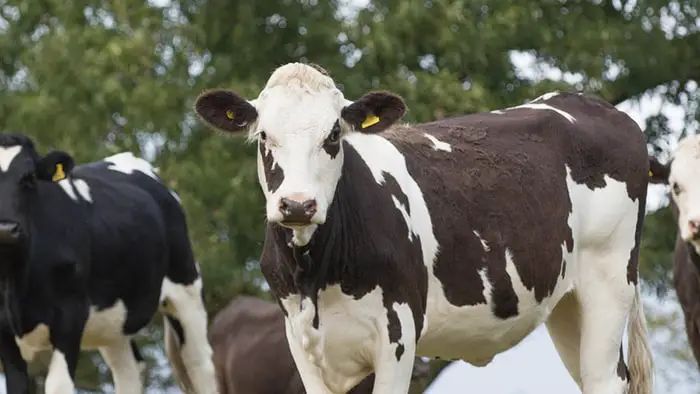
Causes of Leptospirosis in Cattle
Leptospira interrogans cause the disease. Leptospira organisms are small, filamentous, and motile. It has at least 200 different serovars, belonging to 23 serogroups identified with domestic animals and man’s disease. Although many serovars are recognized internationally, only a limited number are endemic to any particular region.
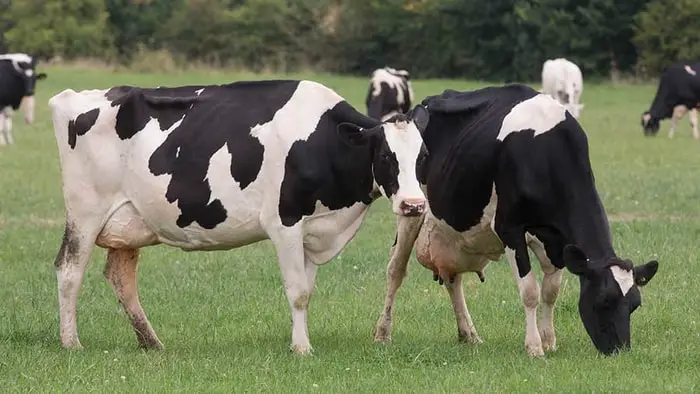
Epidemiology and Transmission of Leptospirosis in Cattle
The disease is distributed worldwide but is most common in temperate and tropical climates. Domestic and wild animals and men are susceptible to the disease. Incidence is highest in cattle and lowest in sheep and goats. Man is susceptible to all pathogenic serovars found in domestic animals.
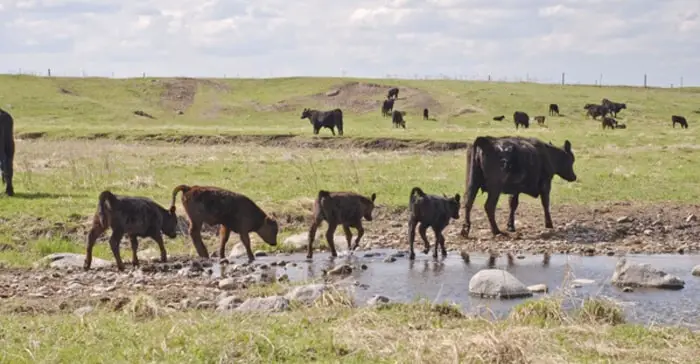
Transmission occurs through urine splashing, placental or uterine discharge after abortion, infected milk, and infected animals. The disease is also transmitted by contaminated soil, water, and feed with the infected animals’ urine, the mucous membrane of the mouth, eye, nose, and birth canal, and irritated skin. Rodents play a vital role in spreading the organism.
The Economic Effect of Leptospirosis on a Herd
The economic importance of Leptospirosis in the dairy or beef cattle herd is as follows:
- Losses to the dairy or beef industry, primarily due to abortion, reduction of milk and weight gain, and secondary due to death.
- Stillbirths and an elevated number of matings to reach conception.
- Infected cows may stop producing milk or produce a small amount of blood-tinged milk that is not used for human consumption.
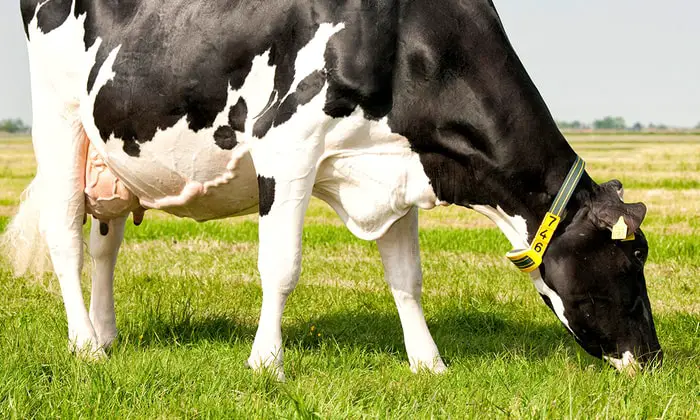
What are the Clinical Signs of Leptospirosis in Cattle?
The clinical signs are mostly very widespread and confused with other diseases. In cattle, the disease may show the following signs:
- Fever 101° to 103° F.
- Weight loss.
- Anorexia.
- Abnormal milk secretion.
- Anemia.
- Hematuria.
- Hemoglobinuria.
- Muscular weakness.
- Pulmonary congestion.
- Icterus.
- Abortion.
- Stillbirth or persistent infection in the newborn.
- Death.
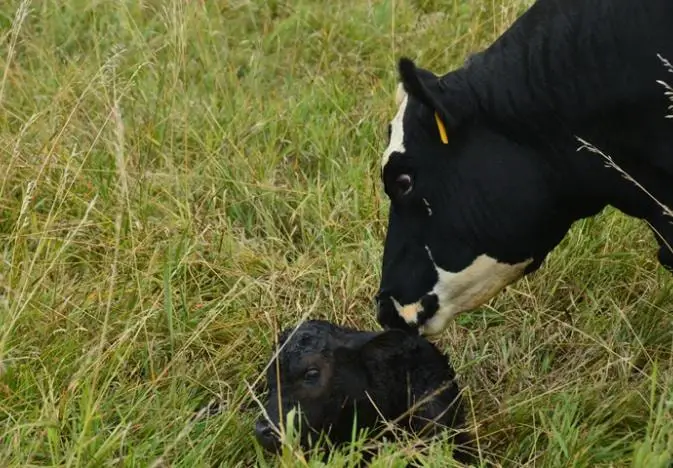
Diagnosis of Leptospirosis in Cattle
A combination of signs and serologic test results provides the most effective diagnostic technique.
- The organism can be found in the blood for the first 7 to 10 days and then move to the kidneys.
- After 7 to 10 days, the organism can be found in fresh urine. The serologic methods consist of fluorescent antibody, agglutination test, and ELISA test.
- The most commonly used for diagnosis of Leptospirosis is the microscopic agglutination test (MAT). definitive confirmation of
- Leptospirosis is made by the isolation of the organism from the urine or tissue of infected animals.
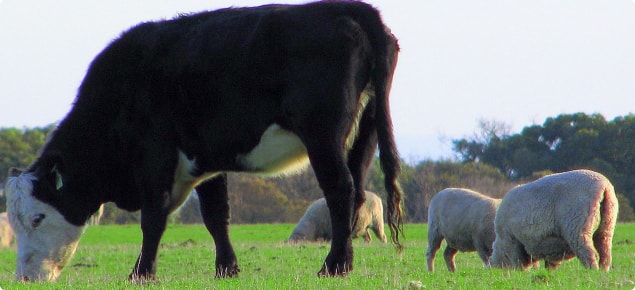
Treatment of Leptospirosis
The infected animal should be isolated from the other animal to avoid the spread of the disease.
- Leptospirosis can be treated with doxycycline, penicillin, ampicillin, amoxicillin, chlortetracycline, and oxytetracycline.
- Chlortetracycline and oxytetracycline have been successful in cattle if you give early.
- However, vaccination is the most effective approach for avoiding the unnecessary use of antibiotics.
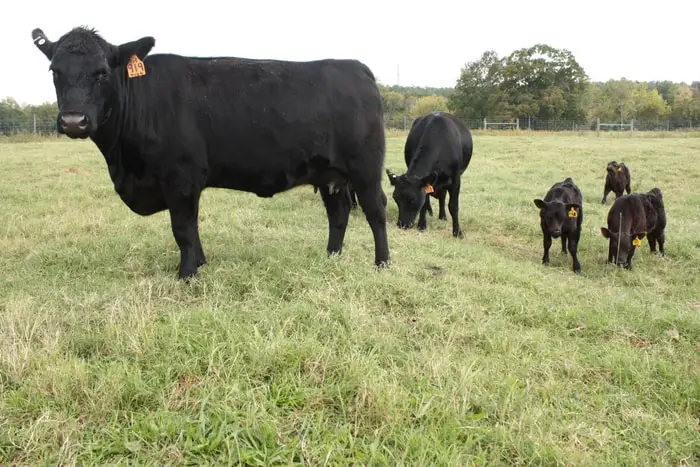
Control and Prevention of Bovine Leptospirosis
Management methods to reduce transmission. These include:
- Rat control.
- Fencing cattle from potentially contaminated streams and ponds.
- Separation of cattle from pigs and wildlife.
- Selection of replacement stock from herds that is seronegative for Leptospirosis.

Can You Vaccinate Against Leptospirosis?
The vaccine is available, and the administration of leptospiral bacterins can result in protection for 6 to 12 months. Revaccination of cattle should be conducted every 6 to 12 months. Frequent vaccinations may result in serologic titers equivalent to those caused by an actual infection.
How Can It Be Passed to Humans?
Humans become infected through contact with water, soil, or food containing urine from these infected animals. After infection, Leptospirosis is frequently localized in the kidneys or reproductive organs and is shed in the urine for months or years. The disease has little effect on wildlife’s health, but certain species may serve as a source of infection for domestic animals and men.
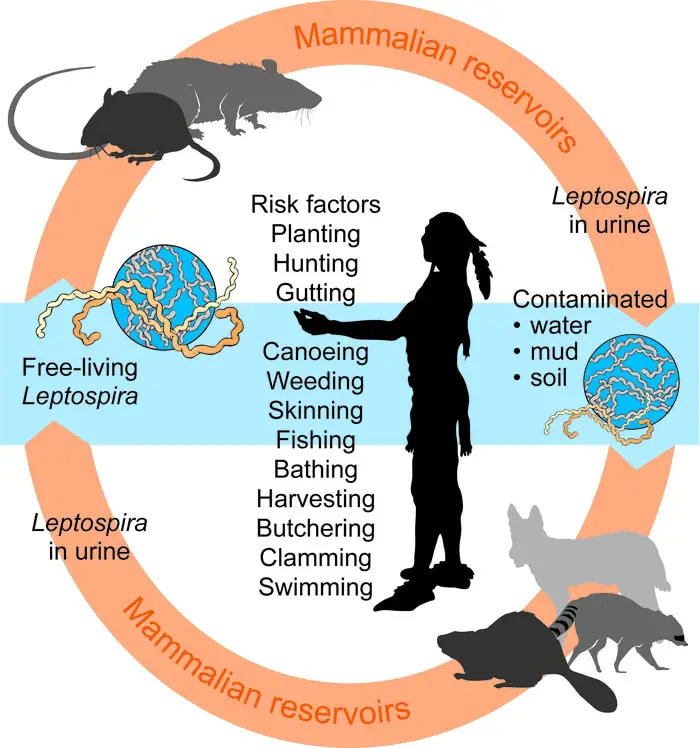
How Does Leptospirosis Affect Humans?
The effect of Leptospirosis in humans is significantly less. The symptoms are very common in other diseases or conditions. In humans, Leptospirosis can cause different symptoms. The symptoms include:
- Fever.
- Headache.
- Muscle pain.
- Vomiting.
- Icterus.
- Kidney failure.
- Chills or decreased body temperature.
- Diarrhea.
- Red eyes.
- Abdominal pain.
- Skin rashes.
Leptospirosis may occur in two phases. The second phase:
- It is more critical; the person may have kidney or liver failure or meningitis and respiratory distress.
- This phase is also known as Weil’s disease.
- The sickness lasts from a few days to 3 weeks or longer.
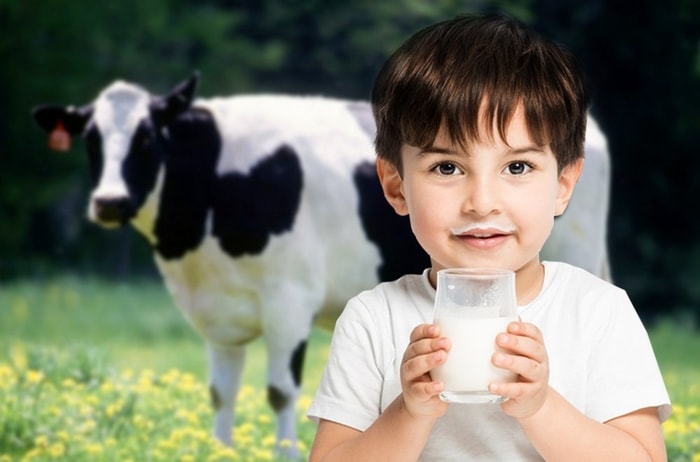
Controls Measures of Leptospirosis in Humans
There are many ways to reduce the incidence of being infected by Leptospira. These include:
- You avoid swimming or wading in freshwater ponds or lakes and slow-moving streams, especially those near farms, and if you have an open wound, sores, or cuts.
- While swimming in ponds, freshwater streams, and lakes, never take water into your mouth.
- Do not drink water from a lake, pond, or stream without boiling or purifying it.
- Control rodents (rats and mice) in areas around the home and work sites
- Have pets and farm animals vaccinated against leptospira
- Wear protective gloves when disposing of dead animals and when gutting livestock or game animals
- Wear protective clothing when working with wet soil or plants
- Drain areas that have still, standing water
Final Advice on Bovine Leptospirosis
Leptospirosis is a significant disease in cattle, sheep, goats, dogs, and cats. The disease has zoonotic importance and is effortlessly transmitted to humans. The persons give care of cattle, and owners are more vulnerable to the disease. The preventive measures that I have highlighted in the article, please try to abide by.